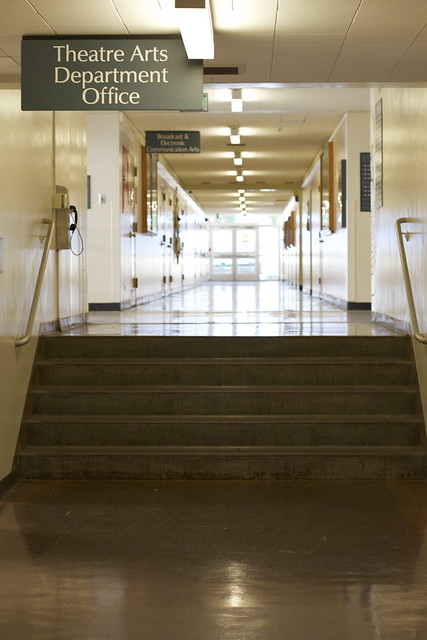
Creativity can flourish anywhere, but it’s better in a brand new building.
A 242,000 square-foot modern facility is in the works to replace the outdated Creative Arts Building, which was completed originally in 1956 and last received additions in 1972, continuing with the trend of renovation of SF State buildings.
While plans have been made, construction depends on a series of funding approvals.
“Eighty percent of the funding is coming from the state of California and 20 percent is coming from private donors,” Robert Nava, vice president of University Advancement, said. “We’re not relying 100 percent on state funding, but they are contributing sizable funds for this project.”
The Mashouf Performing Arts Center would include five performance spaces, including a 1,200 seat opera-style theater and four smaller theaters, according to Marilyn Lanier, senior associate vice president of the department of Physical Planning & Development.
Broadcast and electronic communication arts major Shiro Osawa, who works in the broadcasting equipment cage in the department, said that some of the facilities are dated.
“Studio 1 is good, but we could definitely use an update for the studios,” Osawa said.
The project was predicted to take nine years to complete, but uncertainty with the pending state budget has made it impossible to estimate completion, Lanier said.
The performing arts center would replace the Creative Arts Building, which has too many code violations to fix, according to Nava. Necessary repairs include electrical, heating, ventilation, safety and air conditioning. He said it is more cost-efficient to construct a new building.
“Corrective measures to code and accessibility concerns will further decrease the already limited capacity of this building,” said Simon Lam, the associate vice president for Capital Planning, Design & Construction at SF State. “Additionally, the unique, specialized academic spaces mean that no reasonable surge space is available on campus for a renovation. Therefore, renovation is not a cost-effective option.”
The entire project would cost an estimated $260 million, according to Nava.
Theatre arts major Rachel Goldberg was anxious to know about the acoustics in the new building.
“This theatre department definitely needs updates,” Goldberg, 20, said. “The tech equipment needs to be updated.”
The University started planning the project in 2003, Nava said.
The last higher education bond was passed in 2006, and although they received $10 million to start the project from alumnus Manny Mashouf, SF State is still counting on $40 million from a possible higher education bond in 2014 to complete phase one.
With the majority of the project being state-funded and state revenues failing to meet expectations, progress has been slow.
Phase one “includes administrative spaces, college-wide spaces, and a 1,200 seat theater with associated support space.”
If the higher education bond is passed by a simple majority vote, funds would be distributed through a CSU priority ranking list in which the performing arts center is ranked number 16 out of 30. The Chancellor’s Office would allocate $39.9 million in funding for phase one if the bond passes.
“In the meantime, SF State is coordinating closely with the Chancellor’s Office on each step of the capital outlay process,” Lanier said. “As we monitor this process, we will be prepared to consider the overall funding parameters, including coordinating with the Office of Advancement on donor funds and identifying the program spaces that will be included in each phase.”
There are hopes that the new facility would also connect outside organizations.
“Yes, we expect to connect with other art groups,” Lanier said. “Since SF State’s facility is very student-focused, it is unknown at this time if it might be utilized by other groups.”
The Mashouf Performing Arts Center would be located near the women’s softball field, on Lot 41 at the corner of Lake Merced and Font boulevards, according to Lam. It would include facilities for the broadcast and electronic arts, music and dance, and theatre arts departments.



